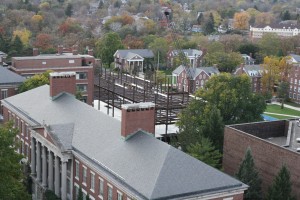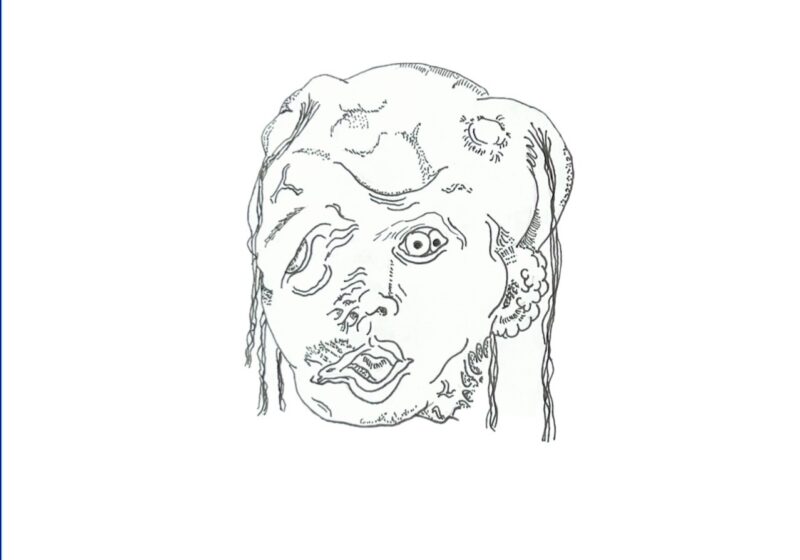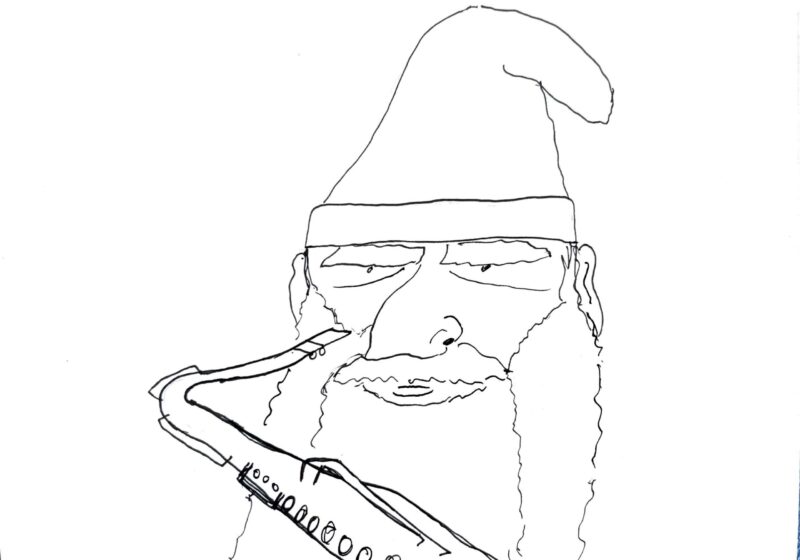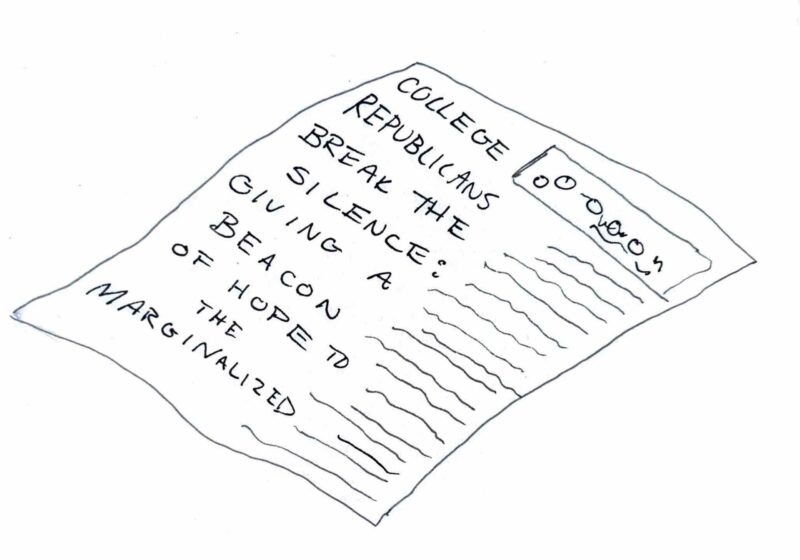At the Freshman Convocation this year, UR President Joel Seligman told the Class of 2015 about UR’s long history and how the school is now a “university on the move.” With new projects popping up all over campus, progress seems to be the University’s theme for the 2011-2012 academic year.
While there has been a lot of hype from the administration, student response to the growing number of changes has been mixed.
“I’m glad I went to a growing school because even after I finish my degree here, that degree will increase in value because more people will have heard of UR and its growing reputation,” sophomore Julian Lunger said.
Other students agree, believing the changes will eventually improve the campus, even if it has to go through a transition period to get there. However, there is opposition to increased expansion, especially because of its implications for students living on campus today.
“I’m fine with the University growing and expanding, but not when it damages what is already a beautiful campus,” sophomore Arthur Dashan said.
The most recent reminder of the continued expansion — other than all the construction -— occurred over Meliora Weekend, with a ceremony that kicked off the largest capital campaign in UR’s history. While the celebration took place two weeks ago, this campaign has been underway since 2005, when President Seligman first took over at the University.
The first visible stages of the capital campaign appeared in 2007. That year saw the creation of the George Eastman Circle — a group of alumni and friends of the school who donate to the University annually — and the first plans for large-scale construction projects. One such plan was PRISM, intended to be an expansion of Strong Hospital on the Elmwood Avenue side. Unfortunately for PRISM, the stock market crashed in September 2008, prompting the URMC administrators to scale back their plans significantly. Nonetheless, fundraising efforts continued to gain momentum and, despite the ongoing recession, adjusted construction plans were approved not only for Strong but also at the Eastman School of Music and now — most recently — on the River Campus with construction.
This year’s sudden explosion of growth around UR may reflect the administration’s desire to expand as much as possible while the economy allows it.
“Cutbacks in federal spending on student aid and research grants would put pressure on us,” Senior Vice President Peter Lennie said. “But we’re resilient, and we’ll work even harder to ensure that we compete even more effectively. Despite very constrained federal spending over the last few years, our faculty has steadily increased the value of the grant awards made to them.”
The resilience that Lennie mentioned is not only seen in the growth of new buildings and grant money, but also in job and academic developments that affect UR and the entire Rochester community.
In contrast to the iconic Rochester businesses Kodak and Xerox — both of which have significantly decreased their staffs in recent times — UR has added more than 2,000 employees in the last five years. With new facilities, programs and a potential affiliation of URMC with Canandaigua’s Thompson Hospital network, the need for employees will continue to rise, which can only help ease the city of Rochester’s unemployment rate. At the same time, UR continues to offer necessary services to the community, primarily through URMC, but also through the Highlands nursing homes in Brighton and Pittsford and through the proposed project of a retail-oriented College Town.
With regard to academia, the recently announced Intel Science & Technology Center for the creation of consumer computer products, as well as the new majors in business, public health and the recently announced one in digital media, reflect a growing integration of UR’s programs with society’s needs.
Associate Dean of Students and Director of Student Activities Anne-Marie Algier expressed her belief that recent developments at UR are geared to produce real-world effects. She argued that, where the federal or state government fails to aid the community due to political infighting, institutions of higher education can step in to fill the void.
While higher education tends to fill these gaps within communities, the growing applicant pools to UR ensure that the vacancies in incoming classes will be filled by high achieving students. As the college admission process becomes more competitive, UR has seen a rise in the incoming freshman GPA from 3.56 in 2005 to 3.81 this year. Simultaneously, Dean of Admissions Jonathan Burdick noted that a growing number of applicants want UR for their first choice, due to the growing profile of UR’s unique open curriculum.
Dean of the College Richard Feldman also recognized this growth, making note of the rise in scholarship and undergraduate research from 40 percent of students 10 years ago to about 60 percent today.
“Many more students report having taken independent study courses, which often amount to another way to register for a research experience,” Feldman said. “I expect that we will see these numbers continue to grow in the coming years.”
These days UR is going through expansion, and the pace of the growth appears to be accelerating.
“It’s funny,” Burgett said. “Universities and churches — they somehow go on and on while other social institutions rise and fall.”
Gorman, Jr. is a member of the class of 2014.





